#Bravekids Life Insights from Terminally Ill Children – Tissues Required
 Dr. Alastair McAlpine, a palliative pediatrician from Cape Town who works at pediatric palliative care centre PaedsPal, decided that, seeing that young children generally have plenty of wisdom to offer about the little things in life, he would see if they also have insights to offer about life’s bigger problems, the questions that all humans have about life’s purpose and meaning?
Dr. Alastair McAlpine, a palliative pediatrician from Cape Town who works at pediatric palliative care centre PaedsPal, decided that, seeing that young children generally have plenty of wisdom to offer about the little things in life, he would see if they also have insights to offer about life’s bigger problems, the questions that all humans have about life’s purpose and meaning?
To this end, he decided to present a few of these bigger philosophical questions to the young, terminally ill children under his care as part of an assignment in his palliative care diploma program at the University of Cape Town.
The pediatrician shared the results in a series of tweets last week and boy, did they rack up plenty of retweets and tears!
Be warned!! Have a box of tissues at hand and do not be surprised if the “ugly cry” makes an appearance!

McAlpine asked what they had enjoyed about life and the people, places and things that suffused their lives with meaning, and it turns out the terminally ill children, ages 4 to 9, had an abundance of good advice to share…
Here is the expanded thread he posted on Twitter:
NONE said they wished they’d watched more TV.
NONE said they should’ve spent more time on Facebook.
NONE said they enjoyed fighting with others.
NONE enjoyed hospital.
MANY mentioned their pets: “I love Rufus‚ his funny bark makes me laugh‚” “I love when Ginny snuggles up to me at night and purrs‚” and “I was happiest riding Jake on the beach.”
MANY mentioned their parents‚ often expressing worry or concern: “Hope mum will be okay. She seems sad‚” “Dad mustn’t worry. He’ll see me again soon‚” and “God will take care of my mum and dad when I’m gone.”
ALL of them loved ice-cream.
ALL of them loved books or being told stories‚ especially by their parents: “Harry Potter made me feel brave‚” “I love stories in space‚” and “I want to be a great detective like Sherlock Holmes when I’m better.”
Folks‚ read to your kids! They love it.
MANY wished they had spent less time worrying about what others thought of them‚ and valued people who just treated them normally: “My real friends didn’t care when my hair fell out‚” and “Jane came to visit after the surgery and didn’t even notice the scar.”
MANY of them loved swimming‚ and the beach: “I made big sandcastles‚” and “Being in the sea with the waves was so exciting! My eyes didn’t even hurt.”
Almost ALL of them valued kindness above most other virtues: “My granny is so kind to me. She always makes me smile‚” “Jonny gave me half his sandwich when I didn’t eat mine. That was nice‚” and “I like it when that kind nurse is here. She’s gentle. And it hurts less.”
Almost ALL of them loved people who made them laugh: “That magician is so silly! His pants fell down and I couldn’t stop laughing‚” “My daddy pulls funny faces which I just love‚” and “The boy in the next bed farted! Hahaha!”
Laughter relieves pain.
Kids love their toys‚ and their superheroes: “My Princess Sophia doll is my favourite‚” “I love Batman” (all the boys love Batman) and “I like cuddling my teddy.”
Finally‚ they ALL valued time with their family. Nothing was more important: “Mum and dad are the best‚” “My sister always hugs me tight‚” and “No one loves me like mummy loves me.”
Take home message: Be kind. Read more books. Spend time with your family. Crack jokes. Go to the beach. Hug your dog. Tell that special person you love them.
These are the things these kids wished they could’ve done more. The rest is details.
Oh… and eat ice-cream.
McAlpine, who is not a father himself yet, told TODAY Parents that the children’s responses change the way he approaches his work. “They humble me, and they teach me to listen,” he said. “They teach me that there’s more to helping children than prescribing medication, and that a patient is a human being with physical, cultural, psychological and spiritual attributes that we also need to address.”
Source: Life Insights from Terminally Ill Children – Tissues Required






 “It is the essence of being human. It speaks of the fact that my humanity is caught up and is inextricably bound up in yours. I am human because I belong.
“It is the essence of being human. It speaks of the fact that my humanity is caught up and is inextricably bound up in yours. I am human because I belong.
Most Commented